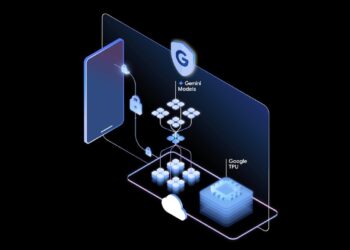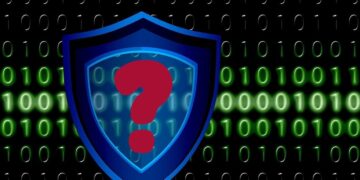Question: Pandemic outbreak has badly affected the entire corporate segments; How enterprises are getting back on the track?
The business momentum was initially muted due to the outbreak of pandemic, however, it picked up the pace by the end of the second quarter. Enterprises were quick to respond to the challenges and the subsequent opportunities that the pandemic has brought forth. The fundamental shift in the business ecosystem dominated by remote working has pushed enterprises to change their business models and scale-up their digital transformation to ensure their survival, growth and market leadership. Enterprises are now relying on aggressive use of digital tools to communicate with their employees and customers and providing access to reliable applications and services that they need.
There has been remarkable growth in the adoption of Cloud-based solutions, Collaboration solutions, AI and IoT, Data Management solutions that allow enterprises to integrate, secure and manage data efficiently. Businesses have also executed optimum risk-mitigation strategies to face the pandemic and acclimatize for any future crises. As we can clearly see, the emerging future of work is being driven by a network economy that is defined by cost efficiency, digital agility, and trust.
Question: Can you explain, how technologies help enterprises and SMEs continue the operation in the pandemic?
The ‘new normal’ created as a result of the pandemic has become an inflection point for the digitally enabled environments and workplace transformation. Earlier the employees would go to work rather than work coming to them. Thus, it has given complete swing to Business Continuity Plan by forcing all to set up access for employees at various points i.e. WFH / remote access. Also, regulatory and security is crucial while we plan Business Continuity Plans for new normal. Enterprises that had invested in digital tools and ecosystem earlier have been able to adapt to this contemporary disruptive business environment with ease. The next-gen technologies are viewed as a key enabler that will drive digital transformation to unlock operational efficiencies.
IoT, AI and Cloud, along with Security overlay, being scalable solutions have witnessed a massive boost, driven by new use cases to accelerate the automation of processes and systems and reduce human interactions for long-term benefits of the enterprises. These technologies give enterprises the ability to develop new business models that offers endless benefits such as improved real-time interaction with customers, accurate insights, better inventory management, higher employee productivity, better resource allocation, effective forecasting resulting in more efficient business decisions.
Question: How Cloud and IoT helping enterprises accelerate business plans?
Enterprises have also expanded the use of Cloud native technologies to harness the full capabilities of their cloud environments. Cloud provides much needed resilience and security that comes from its breadth of deployment options across dispersed data centers. The demand for cloud services, especially hybrid cloud platforms is growing phenomenally due to increased work from home scenario.
Most of the critical applications like CRM, analytics, retail applications etc. are moving to the cloud for the wider reach to different geographies. Applications like Voice and Data over Cloud has played an important role in this new normal. MSMEs being cost-conscious, industry has realized that Cloud access applications not only saves capex but also gives flexibility and accessibility over the internet. Hosted platforms in the data center or Cloud have offered solutions for Voice aggregators, Insurance, Payment gateways etc have given new opportunity to IT-ITES and Banking segment. These services are widely used by MSMEs.
IoT is now seen as an essential enabler for enterprises to be future ready; support their sustainability goals.
The priority at this point of time is to integrate and streamline digital infrastructure at various stages of public health, business momentum and consumer spending, particularly in the context of epidemic forecasting and decision-making. IoT will see more proliferation beyond manufacturing, especially in the FMCG, BFSI, Healthcare sectors.
Question: How can enterprises ensure Cybersecurity by allowing employees working from home?
Cybersecurity, & Web security have become a bigger challenge for enterprises as a greater number of employees are now connecting to the corporate network from their locations. According to an industry estimate, cyberattacks like phishing, Spamming, Trojon, Brute force attack and ransomware saw an upswing during the pandemic. Enterprises cannot afford to lose sensitive data as it can have lasting impact on business sustainability and reputation and sustainability.
As the vital infrastructure of businesses go digital, enterprises need to reassess their digital preparedness and improve the security of their remote users and devices along with the critical data associated with them. This implies investment in a more effective endpoint, email and web security infrastructure,
Remote Access powered by End-point security with multi-factor authentication at Secure Cloud Applications among other initiatives. Besides undertaking effective security measures, the enterprises need to adopt strategies to ensure robust cybersecurity while remote working.
- The enterprises need to impart basic level Security audit, cybersecurity knowledge and develop training programs for the employees on data security and privacy issues. It will help the employees identify various attack vectors and report the same to their IT team or security managers.
- Having a unified threat management system with integration of firewall, IPS/IDS, anti-spam, content and web filtering can help the enterprises securely adopt the cloud and web-based services in today’s digital economy.
To strengthen the security of the enterprises, it is important to implement multi-factor authentication as it helps to enable all systems, endpoints and internal applications. It also provides an additional layer of protection that prevents the attackers from entering the enterprise infrastructure on the cloud or on-premises.
Question: What are the Tata Tele Business Services IoT solutions for enterprises to accelerate the digital transformation journey?
Tata Tele Business Services is a trusted provider of IoT services that are designed to facilitate real-time tracking for informed decision making while helping enterprises undergo rapid digitization. At present, our IoT portfolio comprises of Asset Management, Fleet Management Tracking, School Bus Tracking and Workforce Management.
The Asset Management solution is a location-based service that helps businesses to get real-time location information of the assets (cargo, documents, etc.) and, on/off-site consignments while in transit. Similarly, our Fleet Management service helps businesses monitor their vehicle chain through GPS tracking system and user-friendly web/mobile interface. The Workforce Tracking Services helps to get real-time location information through GPS tracking solutions of a field force of businesses. Lastly, the School Bus Tracking is specially designed to manage the fleet of buses by transforming them into Smart Buses helping get alerts for boarding/deboarding and attendance marking. The service can also be used for corporate employee transportation as well.
The technological developments and deployments enabled by IoT can help enterprises to thrive and navigate their way through the challenges of the post pandemic world, identify new opportunities and take actions basis informed decisions to achieve growth. We believe the IoT market will grow exponentially and we will continue to strengthen our IoT services as per our customers’ requirements.
Question: COVID-19 has accelerated the digital transformation journey across the industries; what do you say on this?
COVID -19 has been a tipping point for digital transformation, the sudden witch to remote digital world has the potential to accelerate digitally-enabled environments and workplace transformation. A few organsiations have handled this forced digital transformation smoothly and the others more fitfully. Digitally driven businesses that continue to modernize their operations stand a better chance for survival, growth and market leadership. For enterprises, technology is and will remain a key differentiator as they figure out new ways of operating their business, building resilience in their supply chains and making their distributed work force more secure and collaborate in more meaningful ways.
Question: What are the Tata Tele Business Services initiatives to influence the digital transformation journey across the MSMEs?
We partner with MSMEs as a progressive digital catalyst to chart their digital journey and provide them with a comprehensive portfolio of ICT solutions that are scalable, easy to deploy, and are available in an asset/capex light model. The new normal has presented us with an opportunity to help businesses in their digital journey and enable them to run their operations seamlessly.
We have approached MSMEs vis various sessions along with our Channel partners on Business continuity Enterprise solution. We have demonstrated on how to mitigate current challenges by accessing Data, Voice and ICS from various access points i.e. home or wherever user is; without compromising on security These bespoke solutions suitably address the distributed and remote working environment and enable customers to work smoothly while not compromising on efficiency and productivity.
We have strengthened our suite of ‘Work from Home’ solutions, which includes hosted voice solutions to allow enterprises to quickly set up distributed call centers and enable agents to work from home. Others like hosted audio and web conferencing solutions and international bridging services ensure connectivity and collaboration amongst teams spread across the globe. We also have strengthened Cybersecurity portfolio to provide a world class Cloud Content Security Platform (CCSP) to offer email security, web security, next generation firewall, endpoint security and multi-factor authentication (MFA) Security Services. TTBS customers can now have access to a comprehensive smart perimeter security proposition that is robust, scalable and can be rapidly deployed at an affordable cost.
For the last two decades, our deep customer engagements have helped us to develop solutions that would enable MSMEs to compete and win in their respective business segments. Our business growth trajectory has been ahead of the industry. This has been achieved largely by a strong focus on product innovation and customer-centricity, while at the same we continue to invest in rolling out a high capacity, high resilience fiber network and deploying the latest IT tools and business applications. Last but not the least, we have the largest channel partner network which is close at hand to meet the requirements of our customers in around 60 cities in the country.
Read More:
Low Code: Transforming Banking, Today and Tomorrow























